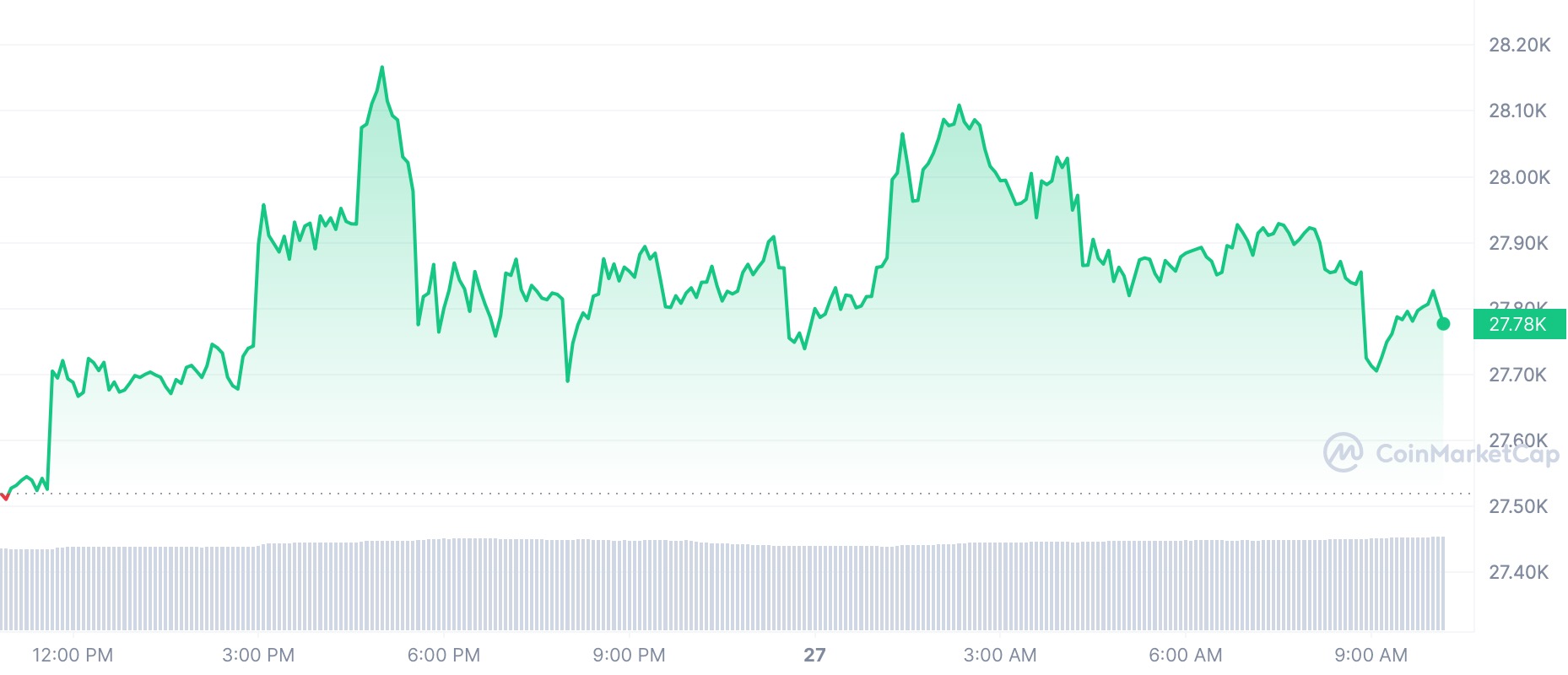As Bitcoin’s price recovers from its March lows, nearing $28,900, concerns surrounding the liquidity crisis that caused the initial dip persist.
The closure of Silvergate’s SEN and Signature’s Signet network in early March has left the crypto market exposed to low liquidity risks.

Liquidity, considered king in trading circles, refers to a market’s ability to facilitate the conversion between an asset and fiat currency. Poor liquidity can lead to market inefficiencies, causing traders to lose money due to thin order books, slippage, and larger spreads. This may also result in serious volatility, deterring investors from trading.
Clara Medalie, Kaiko‘s head of research, warns that the current situation is “pretty dangerous,” as it may manifest in massive price volatility in both directions.
“The moment buy pressure subsides, anything can happen to the price,” Medalie added.
The liquidity crisis first appeared with a $200 million drop in 1% market depth following the closure of Silvergate’s SEN network, as reported in Kaiko’s recent research note.
The market depth for Bitcoin and Ethereum remains down 16.12% and 17.64%, respectively, compared to their monthly opening levels.
Inefficiencies like high slippage and larger spreads have arisen due to the liquidity crunch. For instance, Coinbase’s BTC-USD pair currently exhibits nearly three times higher slippage compared to the beginning of March.
Binance’s BTC-USDT pair, the most liquid pair in the crypto market, also suffered after the exchange ended its zero-fee program, resulting in a 70% depletion of the pair’s liquidity as market makers sought more lucrative opportunities.
These conditions have discouraged market makers and sophisticated day traders from placing trades, exacerbating the low-liquidity environment.
The market share of fiat dollars and stablecoins has significantly shifted, with stablecoin volumes on centralized exchanges rising from a 77% share to 95% in just over a year. This trend has accelerated rapidly after the closure of crypto banking networks.
While the shift to stablecoin trading pairs does not create issues for medium to small-scale investors, it can pose problems for more sophisticated traders who need to settle their trades daily.
Medalie explains that USD networks are essential for traders, and stablecoins may not be an ideal alternative for risk management, especially for end-of-day or end-of-week settlements.
However, stablecoins may serve as the next best option when banks close and do not process transactions.